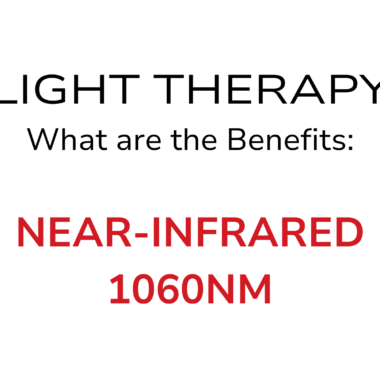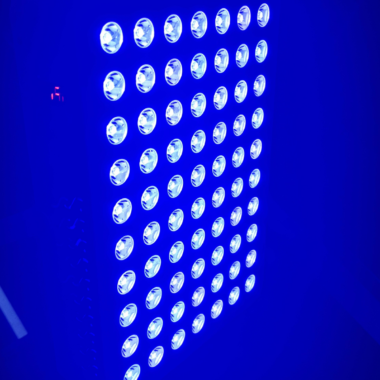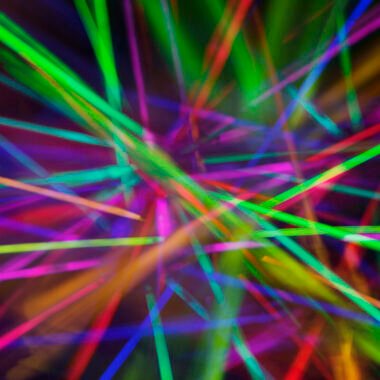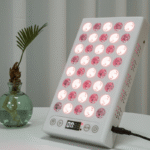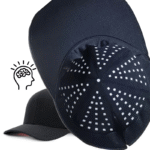Table of Contents
ToggleIntroduction to LED Light Therapy
LED (Light Emitting Diode) light therapy has gained immense popularity in recent years for its broad range of applications, including skin rejuvenation, pain relief, and acne treatment. This non-invasive treatment has become a staple in dermatology clinics, wellness centres, and even at home, thanks to its effectiveness and ease of use. But what exactly is LED light therapy, and how does it work? This comprehensive guide delves into the science behind LED light therapy, explaining how it works, why it’s effective, and the research supporting its benefits.
Understanding LED Light Therapy
The Basics of LED Light Therapy
LED light therapy uses specific wavelengths of light to penetrate the skin at different depths. These wavelengths correspond to various colours of light, each with unique therapeutic benefits. The most commonly used wavelengths in LED light therapy are:
- Red Light (630-700 nm): Known for its anti-aging properties, red light penetrates deep into the skin, promoting collagen production and reducing inflammation.
- Blue Light (405-420 nm): Primarily used for acne treatment, blue light targets and kills acne-causing bacteria.
- Near-Infrared Light (700-1200 nm): Penetrates the deepest and is used for pain relief, wound healing, and reducing inflammation.
How LED Light Therapy Works
LED light therapy works by delivering light energy to the body’s cells, which is then converted into cellular energy. This process, known as photobiomodulation, enhances cellular function and promotes healing. Here’s a closer look at the mechanisms involved:
- Absorption of Light Energy: When the skin is exposed to LED light, the light photons are absorbed by the cells’ mitochondria, the powerhouse of the cells.
- Increased ATP Production: The absorbed light energy stimulates the mitochondria to produce more adenosine triphosphate (ATP), the energy currency of the cells. Increased ATP production enhances cellular function and repair.
- Reduced Oxidative Stress: LED light therapy helps reduce oxidative stress by neutralizing free radicals, which can damage cells and cause inflammation.
- Modulation of Inflammation: The therapy also influences the production of inflammatory mediators, reducing inflammation and promoting healing.
Scientific Research and Evidence
Anti-Aging Benefits
One of the most well-researched applications of LED light therapy is its anti-aging effects. Red light therapy, in particular, has been shown to stimulate collagen and elastin production, which are crucial for maintaining skin elasticity and firmness.
- Clinical Study on Collagen Production: A study published in the Journal of Investigative Dermatology found that red light therapy significantly increased collagen production in human skin, improving skin texture and reducing wrinkles. Journal of Investigative Dermatology
Acne Treatment
Blue light therapy is widely used to treat acne by targeting and killing Propionibacterium acnes, the bacteria responsible for acne.
- Effectiveness of Blue Light Therapy: A study published in the Journal of Cosmetic and Laser Therapy demonstrated that blue light therapy significantly reduced acne lesions in patients after four weeks of treatment. Journal of Cosmetic and Laser Therapy
Pain Relief and Inflammation Reduction
Near-infrared light therapy has shown promise in reducing pain and inflammation, making it a valuable tool for managing conditions like arthritis and muscle injuries.
- Pain Management Study: Research published in the European Journal of Physical and Rehabilitation Medicine found that near-infrared light therapy significantly reduced pain and improved function in patients with chronic neck pain. European Journal of Physical and Rehabilitation Medicine
Wound Healing
LED light therapy is also effective in promoting wound healing by enhancing cellular energy and reducing inflammation.
- Wound Healing Research: A study in the Journal of Photochemistry and Photobiology demonstrated that red and near-infrared light therapy accelerated wound healing and reduced inflammation in animal models. Journal of Photochemistry and Photobiology
How LED Light Therapy is Applied
In-Clinic Treatments
Professional LED light therapy treatments are available in dermatology clinics, medical spas, and wellness centres. These treatments typically use high-powered LED devices to deliver more intense and precise light therapy.
- Professional Devices: Clinics use advanced LED devices that can target specific skin concerns with higher light intensities and longer wavelengths, ensuring deeper penetration and more effective treatment.
- Customized Treatment Plans: Dermatologists and skincare professionals customize treatment plans based on individual skin concerns, ensuring optimal results.
At-Home Devices
For those who prefer the convenience of at-home treatments, there are numerous LED light therapy devices available. These devices are user-friendly and designed for regular use.
- Types of At-Home Devices: At-home devices come in various forms, including handheld devices, masks, and light panels, allowing users to target specific areas or treat broader regions.
- Ease of Use: Most at-home devices are designed to be easy to use, with pre-set treatment programs and adjustable settings to suit individual needs.
Safety and Side Effects
LED light therapy is generally considered safe, with minimal side effects. However, it’s important to follow proper guidelines and consult with a healthcare provider if you have any underlying medical conditions.
- Common Side Effects: Mild side effects may include temporary redness, swelling, or irritation, which typically resolve quickly.
- Precautions: Individuals with certain conditions, such as photosensitivity disorders or those taking photosensitizing medications, should consult with a healthcare provider before undergoing LED light therapy.
Benefits of LED Light Therapy
Skin Rejuvenation
LED light therapy is widely recognized for its skin rejuvenation benefits. Red light therapy, in particular, can improve skin texture, reduce wrinkles, and promote a more youthful appearance.
- Collagen Stimulation: Red light therapy enhances collagen production, helping to firm and smooth the skin, reducing the appearance of fine lines and wrinkles.
- Improved Skin Tone: The therapy also promotes an even skin tone by reducing hyperpigmentation and improving overall skin radiance.
Acne Reduction
Blue light therapy is effective in reducing acne by targeting acne-causing bacteria and reducing inflammation.
- Bacterial Elimination: Blue light therapy penetrates the skin and kills bacteria responsible for acne, helping to clear up existing acne and prevent future breakouts.
- Inflammation Reduction: The therapy also reduces inflammation and redness associated with acne, promoting a clearer and calmer complexion.
Pain Relief
Near-infrared light therapy provides significant pain relief for various conditions, including arthritis, muscle injuries, and chronic pain.
- Pain Reduction: Near-infrared light penetrates deep into tissues, reducing pain by enhancing blood flow and reducing inflammation.
- Accelerated Healing: The therapy also promotes faster healing of injuries by increasing cellular energy and reducing oxidative stress.
Enhanced Wound Healing
LED light therapy accelerates the wound healing process by promoting cellular repair and reducing inflammation.
- Cellular Repair: Increased ATP production boosts cellular repair mechanisms, facilitating faster wound healing.
- Inflammation Modulation: The therapy reduces inflammation, which is crucial for effective wound healing and reducing the risk of infection.
Improved Joint Health
LED light therapy is beneficial for improving joint health and function, particularly in individuals with arthritis or joint injuries.
- Joint Pain Relief: Near-infrared light therapy reduces joint pain by decreasing inflammation and promoting better blood flow to the affected areas.
- Enhanced Mobility: The therapy also improves joint function and mobility, making it easier for individuals to engage in daily activities.
Practical Considerations
Choosing the Right Device
When selecting an LED light therapy device, it’s important to consider factors such as wavelength, intensity, and treatment area.
- Wavelength: Ensure the device uses the appropriate wavelength for your specific needs (e.g., red light for anti-aging, blue light for acne).
- Intensity: Higher intensity devices may provide more effective treatment but should be used with caution to avoid overexposure.
- Treatment Area: Choose a device that suits the treatment area, whether it’s a handheld device for targeted areas or a mask/panel for broader coverage.
Frequency and Duration of Treatments
The frequency and duration of LED light therapy sessions depend on the specific condition being treated and the device used.
- Initial Treatment Plan: For most conditions, an initial series of treatments (e.g., 2-3 sessions per week for 4-6 weeks) is recommended to achieve noticeable results.
- Maintenance Treatments: After the initial series, maintenance treatments (e.g., once a week or as needed) can help sustain the benefits.
Cost Considerations
The cost of LED light therapy can vary widely depending on the setting (in-clinic vs. at-home) and the type of device used.
- In-Clinic Treatments: Professional treatments can be more expensive but may offer faster and more significant results due to the use of high-powered devices.
- At-Home Devices: While the initial cost of at-home devices can be high, they offer a cost-effective solution for long-term use without recurring costs.
Conclusion
LED light therapy is a scientifically-backed, non-invasive treatment that offers a wide range of benefits, from skin rejuvenation and acne reduction to pain relief and wound healing. By understanding the science behind LED light therapy and its various applications, you can make informed decisions about incorporating this innovative treatment into your wellness routine.
Long-Term Benefits and Sustainability
One of the key advantages of LED light therapy is its potential for long-term benefits and sustainability. Unlike some treatments that provide only temporary relief or improvements, LED light therapy can lead to lasting changes when used consistently over time.
- Sustained Skin Improvements: Regular use of red light therapy can help maintain collagen levels, ensuring that skin remains firm and youthful-looking.
- Chronic Pain Management: For those suffering from chronic pain conditions, ongoing use of near-infrared light therapy can provide continuous relief and improve quality of life.
- Prevention of Acne Breakouts: Consistent blue light therapy can help keep acne-causing bacteria at bay, reducing the frequency and severity of breakouts.
Integrating LED Light Therapy into Your Routine
To maximize the benefits of LED light therapy, it’s important to integrate it into your daily or weekly routine in a way that complements your lifestyle and addresses your specific needs.
- Daily Skincare Routine: Incorporating a few minutes of red or blue light therapy into your daily skincare routine can enhance the effectiveness of your other skincare products and treatments.
- Post-Workout Recovery: Using near-infrared light therapy after workouts can help reduce muscle soreness and accelerate recovery, allowing you to maintain an active lifestyle.
- Evening Relaxation: Incorporating a relaxing LED light therapy session into your evening routine can help reduce stress and promote better sleep, especially if you’re using devices designed to target pain or inflammation.
Future of LED Light Therapy
The future of LED light therapy looks promising, with ongoing research and technological advancements likely to expand its applications and improve its efficacy. Here are some potential future developments:
- Advanced Personal Devices: As technology continues to evolve, we can expect to see more advanced personal LED light therapy devices that offer increased power, customizable settings, and enhanced user experience.
- Expanded Clinical Applications: Research is likely to uncover new clinical applications for LED light therapy, including its potential use in treating more complex medical conditions and enhancing overall health and wellness.
- Combination Therapies: Future treatments may combine LED light therapy with other therapeutic modalities, such as topical treatments or other forms of light therapy, to enhance results and address a wider range of concerns.
Final Thoughts
LED light therapy offers a versatile, non-invasive, and scientifically-supported solution for a variety of health and beauty concerns. Whether you’re looking to rejuvenate your skin, treat acne, manage pain, or promote wound healing, LED light therapy can be an effective addition to your treatment regimen. By understanding the science behind this technology and staying informed about the latest research and developments, you can make the most of LED light therapy and enjoy its numerous benefits.

